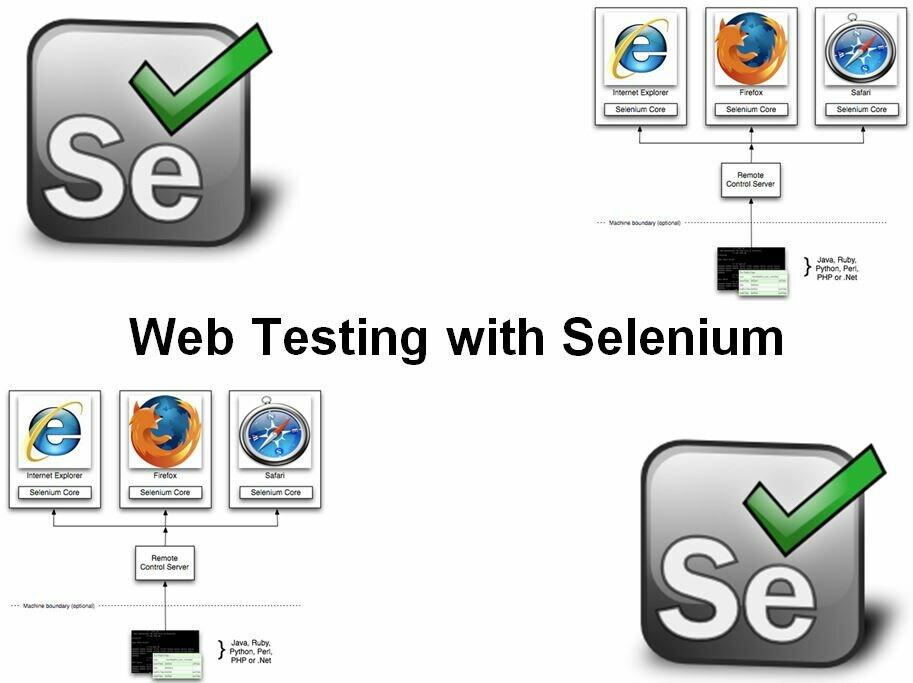-
Learning by doing
-
Trainers with practical experience
-
Classroom training
-
Detailed course material
-
Clear content description
-
Tailormade content possible
-
Training that proceeds
-
Small groups
In the course Web Testing with Selenium participants learn to work with Selenium WebDriver and Selenium IDE to control web applications automatically in different browsers. Selenium is an open source tool used for automating web application testing. Selenium is typically used in conjunction with test frameworks such as JUnit or TestNG for assertion and reporting facilities.
Via scripts in programming languages such as Java, C #, Python and Ruby the real outcomes of certain actions can be compared with the expected outcomes and the results can be reported.
The course Web Testing with Selenium starts with recording user interaction with the Selenium IDE. The recorded test is then translated to a JUnit test script in Java or another programming language that automatically carries out the test.
Topics in the course Web Testing with Selenium are the localization of page elements with id, name, link, CSS and XPath. The most common WebDriver functions are explained and applied. Navigating and manipulating page elements is also discussed.
And also Advanced Web Driver functions such as adjusting wait time, the Page Object Model, Selenium Grid and Cross Browser Testing are discussed.
Finally in the course Web Testing with Selenium the integration of Selenium and the Cucumber Framework will be discussed. With Cucumber User Scenarios can be defined that can be translated to a JUnit Test with Selenium WebDriver.
The course Web Testing with Selenium is intended for testers and developers who want to learn Selenium Webdriver for the automated testing of Web Applications.
To participate in this course experience with programming is not strictly necessary. Knowledge of programming is beneficial for the understanding and can be obtained by participating in our course Java for Testers course.
The theory is discussed on the basis of presentation slides. Demos are used to illustrate the theory. There is ample opportunity to practice. The course material is in English.
Participants receive an official certificate Web Testing with Selenium after successful completion of the course.

Module 1 : Selenium Intro |
Module 2 : Locating Elements |
Module 3 : WebDriver Actions |
| What is Selenium? Test Automation Selenium WebDriver Test Recorders Chrome Selenium IDE Katalon Recorder Selenium IDE Record Test Case Running Scripts Adding Checks Verification Commands Assertion Statements General Selenese Commands WaitFor Commands Store and Echo Commands IDE Limitations |
Loading WebDriver Web Elements Finding Elements Locator Types Locating by ID and Name Locating by Link Text Locating by CSS Selector Tag, ID and Class Tag and Attribute Inner Text Locating by DOM DOM getElementsByID DOM getElementsByName Dom Name and Index Locating by XPath XPath Syntax |
WebDriver Functions Actions on WebElements Clicking Check Boxes Clicking Radio Buttons Getting Attributes Sending Keys State Testing Clearing Submitting Select Items Table Lookup Get CCS Get Location Actions Class Switching Windows Waiting for Loading |
Module 4 : JUnit Testing |
Module 5 : Advanced Web Driver |
Module 6 : Selenium and Cucumber |
|
What is JUnit? JUnit Integration Assert Statements Running JUnit Tests JUnit Classes System Under Test Fixtures Annotations Test Suites Suite in Suite Suite TestRunner Special Case Parameterized Tests Executing Parameterized Tests |
WebDriverWait Implicit vs Explicit Wait ExpectedConditions Dealing with Alerts Synchronisation Strategies Cookies Page Object Model Page Objects private Methods Page Factory Loadable Components Selenium Grid Hub and Nodes Cross Browser Testing |
Test Driven Development Behavior Driven Development What is Cucumber? User Stories Scenarios Feature Files Gherkin Language Given and When Keywords Then and And Keywords Background Cucumber Options Step Definitions Selenium Cucumber Integration Data Driven Testing |
